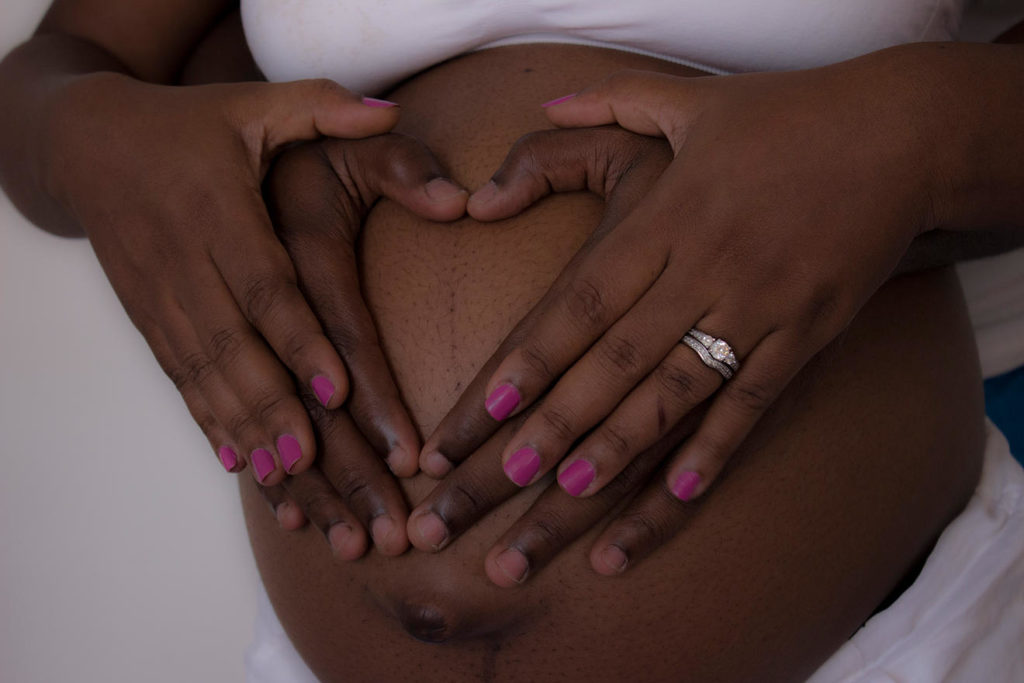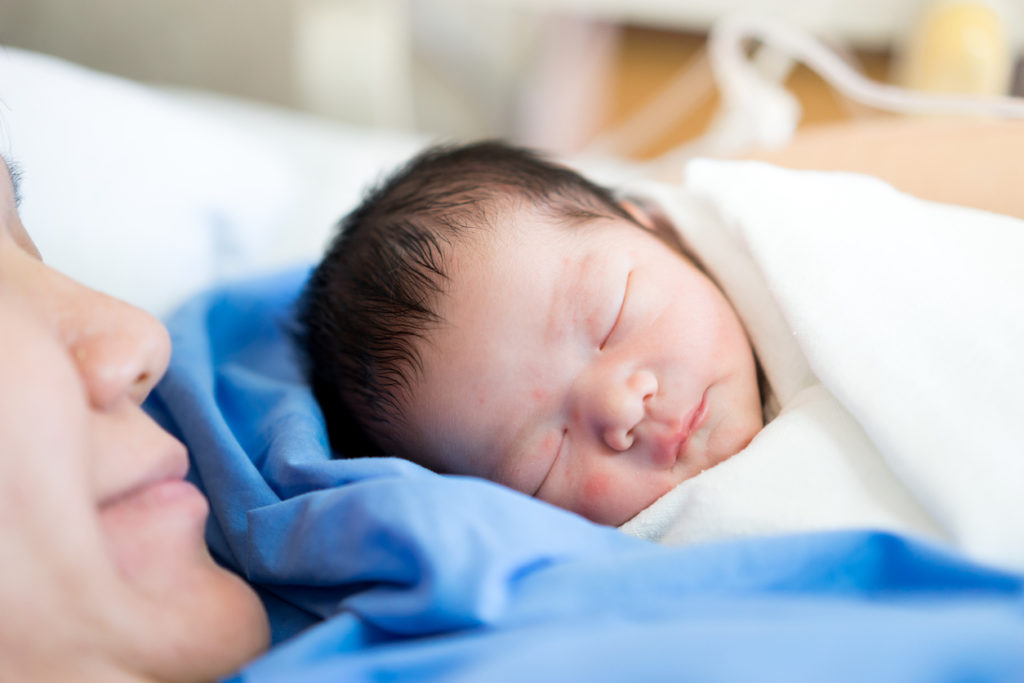FUN PREGNANCY FACTS THAT PROVE THE HUMAN BODY IS AWESOME
Calling all biology nerds!!!
We dedicate this week’s blog post to all of the weird, mind-blowing, and just plain awesome biology fun facts about pregnancy. Just the fact that the human body is able to create life is pretty awesome in itself – but it doesn’t stop there! So make “womb” for some super cool pregnancy biology facts (ba dum bum tssss) 😉
1. Ever hear the old wive’s tale that pregnancy heartburn means your baby will have a full head of hair? Well it’s NOT just a myth!
Don’t believe us? Check out the science 🙂 There’s a lot of folklore surrounding pregnancy, but this myth actually happens to be true! Throughout pregnancy your body experiences much higher levels of estrogen than usual because it is produced and released by the placenta. These estrogen levels can vary from parent to parent. Among many things, estrogen stimulates hair growth. So parents producing larger amounts of estrogen will generally have a baby with more hair. In order to prepare for labor, estrogen also helps loosen and relax the body, which happens to include the sphincter that connects your stomach and esophagus. A looser sphincter means more heartburn! So it’s not necessarily that the baby’s full head of hair is causing heartburn, it’s that the higher levels of estrogen are causing both of them independently of each other.
2. Babies can cry in the womb
Pretty wild, huh? This was discovered accidentally in a research study initially looking at the effects of tobacco and cocaine use on pregnancy. When the researchers played a loud and jarring sound against each mom’s belly while observing their baby through an ultrasound, a large number of the babies startled and opened their mouths as if to cry. This led the researchers to believe that the physical instinct of crying may be a behavior that develops in the womb, while the actual sounds of crying arrive after the baby is born.
3. Pregnancy can reduce symptoms of IBS!
Two of the defining characteristics of Irritable Bowel Syndrome (IBS) are: high amounts of inflammation in the gut, and abnormal populations of bacteria in the digestive tract. In general, inflammation is a handy defense mechanism that your body uses as a second-line of defense (only second to physical/chemical barriers like your skin, mucus membranes, the acidity of your stomach etc…). It’s your body’s version of “Battle Mode” against invaders and making the mad-dash to heal tissue damage. With IBS, the body increases inflammation to try to repair the irritable tissue and destroy bacteria/viruses trying to leak from the intestines. As a result of this, a lot of the healthy bacteria needed for digestion are killed and unhealthier balances of bacteria are left to grow. Along with the added inflammation, this causes the diarrhea, cramping, bloating, and mucus in the stool that are common in IBS. During pregnancy, your immune function decreases enormously. This is why pregnant parents are more likely to catch colds, the flu, and other nasty illnesses! This sounds scary, but it’s actually a really clever mechanism the human body has developed to prevent your immune system from seeing your baby as an “invader”. Your baby does have different DNA after all! Decreased immune responses mean less inflammation, and as a result, fewer of the unpleasant symptoms of IBS! Especially since the healthy bacteria are left to grow and be happy. Pretty cool, right? If your inner immunologist and microbiologists are geeking out, take a look at the study that discovered this!
4. If you’re taller than 5’5 you’re more likely to have twins
In particular, fraternal twins! And because of this, countries with taller populations tend to also have larger rates of twins. This is all thanks to a protein called IGF (aka Insuline-like Growth Factor). When the body is ready to grow, such as during puberty, the liver releases the protein IGF to help elongate bones. Shorter people have been found to have lower levels of IGF while taller people have higher levels. IGF also makes the ovaries more responsive to the hormone that triggers ovulation (Folicle-Stimulating Hormone). As a result, with more IGF and more stimulation of the ovaries, taller people are also more likely to release more than one egg at once!
5. The placenta is the only organ in the human body that’s not intended to be lifelong
The placenta is a well-known part of pregnancy, but many people forget that it’s actually an organ! It’s not just a layer of tissue between the baby and parent. It’s considered an endocrine organ because it releases its own hormones and consists of multiple types of tissue. So essentially, humans grow an entirely new organ solely for pregnancy, which is pretty cool! What’s more, the placenta is the only Temporary Organ that exists in the human body. Every other organ is supposed to last for the duration of our lifetime.
6. Subsequent pregnancies are easier on the immune system than the first pregnancy
For this cool fun fact we have to dip our toes in a bit of immunology. The immune system has two different branches: the Innate Immune System (general), and the Adaptive Immune System (specific). The innate immune system is the first-line of defense against outside pathogens that aims to clear away invaders and repair damaged tissue as quickly as possible (e.g. physical and chemical barriers such as skin, mucus membranes, inflammation, etc…). The adaptive immune system is much more advanced. It sends out a specialized team of immune cells that are tailored to each specific threat. Once the threat is cleared, the adaptive immune system holds on to cells that remember how to destroy that pathogen so it can be destroyed more efficiently next time. In order to do this, immune cells need to be able to differentiate between “self” and “non-self” cells. This becomes a bit more complicated during pregnancy, since the baby’s DNA is technically “half self” and “half not-self”! Key players in navigating this dichotomy are regulatory T cells, which are part of the adaptive immune system. Regulatory T cells prevent the body from overreacting by scaling back an attack when it’s no longer needed (e.g at the end of a cold), and intercept if misguided cells try to attack “self” tissues. During pregnancy, cells from the baby travel all around the parent’s body and frequently come into contact with regulatory T cells. These regulatory T cells tell the rest of the immune system not to attack the baby’s cells and tissues. Even after pregnancy some of these memory-holding regulatory T cells will be stored in the body, so that during the next pregnancy the body will be able to suppress its immune response more quickly and efficiently. With the suppression of immune responses becoming more effective and and less defensive against the baby with each pregnancy, subsequent pregnancies often have fewer negative complications/symptoms. For more info check out this awesome article!
7. A baby’s stem cells are stored in their parents’ body for the rest of their lives
And what’s even cooler, those stem cells can even travel around the body to help heal damaged organs and tissues! So regardless of how many pregnancies you have, and no matter how long those pregnancies lasted, each baby’s cells are stored in your body for the rest of your life.
8. The populations of bacteria in the digestive tract change drastically throughout each trimester
The human microbiome is awesome. For anyone new to Microbiology, a microbiome is a community of microscopic organisms (bacteria, viruses, fungi, etc..) that inhabit a given location, and in this case, different parts of the human body. A healthy microbiome is a delicate balance where each species of bacteria exists in just the right amount so that the community can coexist while not being harmful to their host human. Unless the microbiome is altered in some way (such as through antibiotics, certain illnesses, or extreme stress), the gut microbiome pretty much stays consistent throughout adulthood. The balance of bacterial species also tends to be similar for anyone in a given society/culture. During pregnancy, the body goes through a series of changes caused by the increase and decrease of different hormones and neurotransmitters. All of these hormones, neurotransmitters, immune factors, and the biological functions triggered by these molecules have enormous effects on the delicate balance of bacteria living in the digestive tract. While an increase in pregnancy hormones may provide an ideal living environment for some bacteria, it creates a hostile living environment for others and causes them to die out. This leaves room for other bacteria to grow in their place, and as a result changes the balance. The cool thing is, the pregnancy hormones select for bacteria that promote fat gain and decrease sensitivity to insulin, resulting in higher blood sugar levels. This particular microbiome, which would put non-pregnant parents at high risk for cardiovascular disease, is actually super healthy for pregnant people because it helps facilitate the growth of a baby and the production of breast/chest milk. During the third trimester of pregnancy, the microbiome changes again to favor bacteria associated with increased inflammation. This is most likely to maximize the amount of nutrients going to the baby in this last stretch of pregnancy. What’s even COOLER, is that researchers took samples of pregnancy microbiomes and put them in the intestines of non-pregnant mice. The mice then started showing increased fat gain, increase inflammation, and decreased insulin sensitivity even without the hormones associated with pregnancy. This suggests that the microbiome itself plays an enormous role in driving the biological functions of the body!
9. The foods you eat frequently during pregnancy are more likely to be your baby’s favorite as they get older
Although the placenta acts as a barrier, it’s not a perfect barrier. Flavors of food can cross through the placenta and into the amniotic fluid surrounding your baby! As a result, your baby swallows these flavors and starts developing their taste palate before they’re even born. Research has found that exposure to these flavors during the prenatal period have a profound effect on a baby’s taste preferences as they make the switch to solid food! This also might explain why people from different cultures can have such different flavor preferences!
10. Your heart grows bigger during pregnancy
And we don’t just mean metaphorically upon seeing your beautiful little one. In order to transport enough oxygen to both you and your baby, your blood volume increases by 30-50% during pregnancy! To accommodate this, your heart actually grows larger.This is why pregnant parents also tend to have higher heart rates than parents who are not pregnant.
11. Increased levels of the hormone relaxin makes your muscles and tendons more flexible/limber
This is in preparation for labor so that your pelvis, joints, and soft tissues (such as the cervix) can stretch more easily to accommodate the growth and birth of a baby. This is also why some parents go up an entire shoe size during pregnancy! By loosening the ligaments and tendons in your feet, relaxin allows the bones and muscles to expand and flatten out more. So your feet aren’t technically “growing” a whole shoe size they’re just stretched out due to the decrease in tension in your tissues. Swelling and fluid retention also contributes to this. As handy as relaxin is, it’s also one of many reasons that we recommend avoiding high impact exercise during pregnancy because it increases the likelihood of broken bones. But as long as you’re listening to your doctor and not wrestling or playing football during pregnancy, you should be fine!
12. The bumps on your areolas help your baby initiate breastfeeding/chestfeeding
If you’ve ever looked closely at your chest or breasts, you’ll notice that your areolas have little bumps. Some people have more bumps concentrated around the edges, and some people have more bumps towards the area around the nipple. These bumps are called Montgomery’s Tubercles. If you lay your baby on your chest shortly after birth and leave them to their own devices, you’ll notice their heads will start to bob back and forth as they slowly bob and squirm towards the nipple.This is because Montgomery’s Tubercles release the same scent as amniotic fluid. Your baby, smelling the familiar scent of amniotic fluid that they associate with comfort and safety, bobs back and forth towards the scent. Ultimately, this draws them to the nipple even when they can’t open their eyes and helps start the initiation of breast/chestfeeding!
13. After birth, your temperature regulates to match what your baby needs
Of course you’ll be sweating up a storm after pushing your baby out. But for most parents, their core body temperature will actually increase for just those few hours after birth to help warm up the baby. This is one of many reasons that skin-to-skin is so important! Those little guys are tiny and need all the warmth they can get! Skin-to-skin has been proven to be way more effective at regulating an infant’s body temperature than an incubator.
14. Digestion slows down during pregnancy
This is all due to the hormone progesterone. Progesterone, which is at much higher levels during pregnancy, slows down digestion to help the intestines absorb more nutrients for both the parent and their baby. Unfortunately, this slower digestion is also why constipation is so common during pregnancy. Progesterone is also the culprit when it comes to causing the excessive daytime sleepiness that many parents experience during pregnancy.
If any of these facts have tickled your interest, feel free to send us a message! We’re always happy to geek out with fellow birth-nerds and biology-nerds 🙂 If there’s one thing we can attest to as doulas, it’s that:
The human body is pretty freakin’ awesome.





